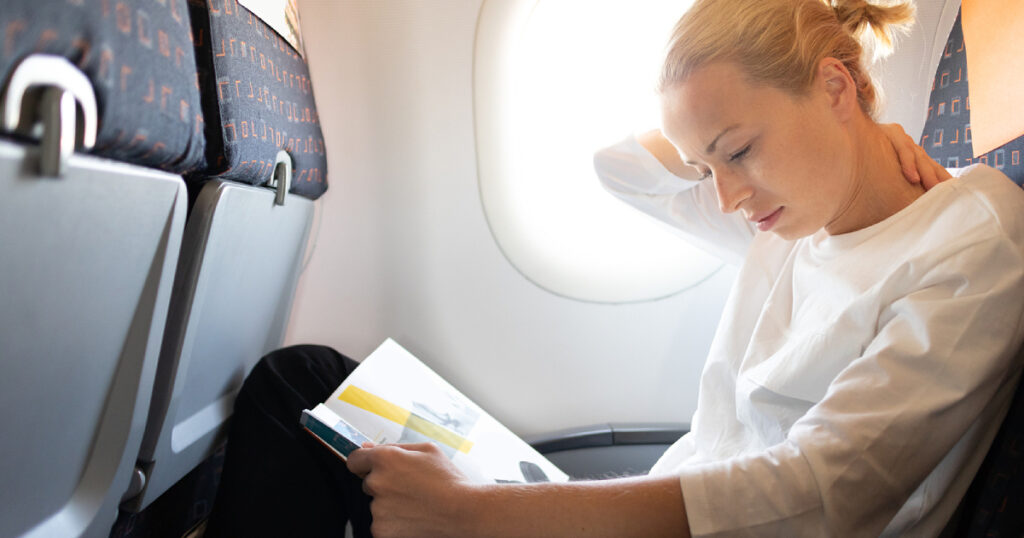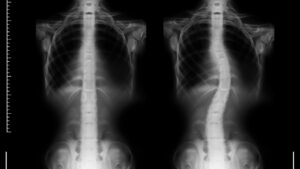
Long-haul flights are an inevitable part of modern travel, whether you’re jetting off for business or a relaxing vacation. However, the experience of sitting for hours in a cramped space can lead to significant discomfort, especially in your back. Singaporeans are no strangers to long flights, and for many, the aftereffects of these flights, particularly back pain, can linger long after landing. Ensuring the right sitting posture during the flight can help reduce the risk of discomfort. Fortunately, chiropractic care offers practical solutions to help mitigate and prevent back pain caused by long flights.
Here are five chiropractic travel tips to ensure a comfortable journey and healthy spine.
1. Prioritise posture during your flight
One of the primary causes of back pain during long flights is poor posture. Many passengers tend to slouch or lean forward when sitting for extended periods, which can strain the lower back and neck. Sitting with your spine properly aligned is crucial for avoiding muscle tension and discomfort.
To maintain good posture, start by adjusting your seat. Ensure that your back is fully supported by the seat’s backrest, and keep your feet flat on the floor. Consider using a lumbar pillow or a rolled-up towel to support your lower back. If you’re sitting upright, this can alleviate pressure on your spine, keeping it in a neutral position.
When you sleep or rest during the flight, it’s also essential to support your neck. A neck pillow can help keep your head in alignment with your spine and reduce the chances of neck pain or stiffness. These small adjustments can significantly reduce the likelihood of discomfort after your flight.
2. Stay active and stretch regularly
A long flight can feel like a marathon for your body, and remaining stationary for hours on end can contribute to poor circulation and muscle stiffness. One of the best ways to combat this is by staying active and stretching regularly.
During the flight, take short breaks to walk around when possible. Stretching your legs and moving your muscles can help maintain circulation and reduce tension. A few simple stretches can also work wonders for your back. Stand up every 1-2 hours, stretch your legs, and rotate your torso to relieve stiffness.
If you’re able to do so discreetly, there are also exercises you can perform in your seat to help alleviate muscle tightness. Gently roll your shoulders, stretch your arms overhead, and tilt your head side to side to ease tension in the neck and shoulders. Regular movement, even in small doses, can make a world of difference when it comes to avoiding back pain.
3. Hydrate to maintain spinal health
Staying hydrated during your flight is crucial for your overall health, including the health of your spine. Dehydration can lead to muscle cramps, joint stiffness, and general discomfort. The air on planes is often very dry, which can contribute to dehydration, so it’s important to drink plenty of water throughout the flight.
The discs in your spine are made up of water, and proper hydration helps keep them flexible and healthy. If you’re flying long distances, drinking water frequently will not only help your muscles but also support spinal health. It’s a good idea to avoid alcohol or excessive caffeine, as these can contribute to dehydration.
Having a water bottle handy and sipping water regularly can go a long way toward ensuring you feel better after the flight, especially if you’re prone to back pain or stiffness.
4. Use ergonomic travel gear
Investing in ergonomic travel gear can significantly improve your comfort during long flights. A well-designed travel pillow, lumbar support, or even a neck pillow can make a world of difference in terms of comfort and preventing pain.
An ergonomic pillow that offers proper neck support will help reduce the risk of tension in your neck and shoulders. When selecting a pillow, make sure it’s adjustable to suit your preferences and provides adequate support. Similarly, for your lower back, an ergonomic lumbar cushion can help maintain the natural curve of your spine while you sit.
If you suffer from chronic back or neck pain, consulting a lower back pain specialist before your trip may also help. They can recommend specific travel accessories or techniques that will provide extra support based on your unique needs.
5. Schedule a post-flight chiropractic check-up
While preparing for your flight is crucial, taking care of your back after the journey is equally important. The strain from long flights can often manifest as back or neck pain once you arrive at your destination. To minimise discomfort and ensure that your spine is properly aligned, it’s a good idea to schedule a chiropractic check-up after your flight.
Visiting a neck pain specialist after a long flight can help address any postural imbalances or misalignments that may have occurred during your journey. A chiropractic adjustment can restore your spine’s natural alignment and alleviate any stiffness or tension caused by prolonged sitting.
Whether you’re facing mild discomfort or more severe pain, chiropractic care offers effective solutions for ensuring your body recovers quickly from travel stress.
Conclusion
Long flights can take a toll on your body, especially your back, but with a few simple precautions, you can prevent or reduce discomfort. By prioritising good posture, staying active, hydrating, using ergonomic gear, and scheduling a post-flight chiropractic check-up, you can ensure that your travel experience is as pain-free as possible. If you’re planning a long journey and are concerned about back pain, visiting a lower back pain specialist or a neck pain specialist before or after your trip can provide valuable insights and personalised advice.
At Healing Hands Chiropractic, we’re here to support your spinal health. If you’re struggling with back pain after your flight or simply want to learn how to keep your spine in top condition, don’t hesitate to reach out to us for expert chiropractic care.



